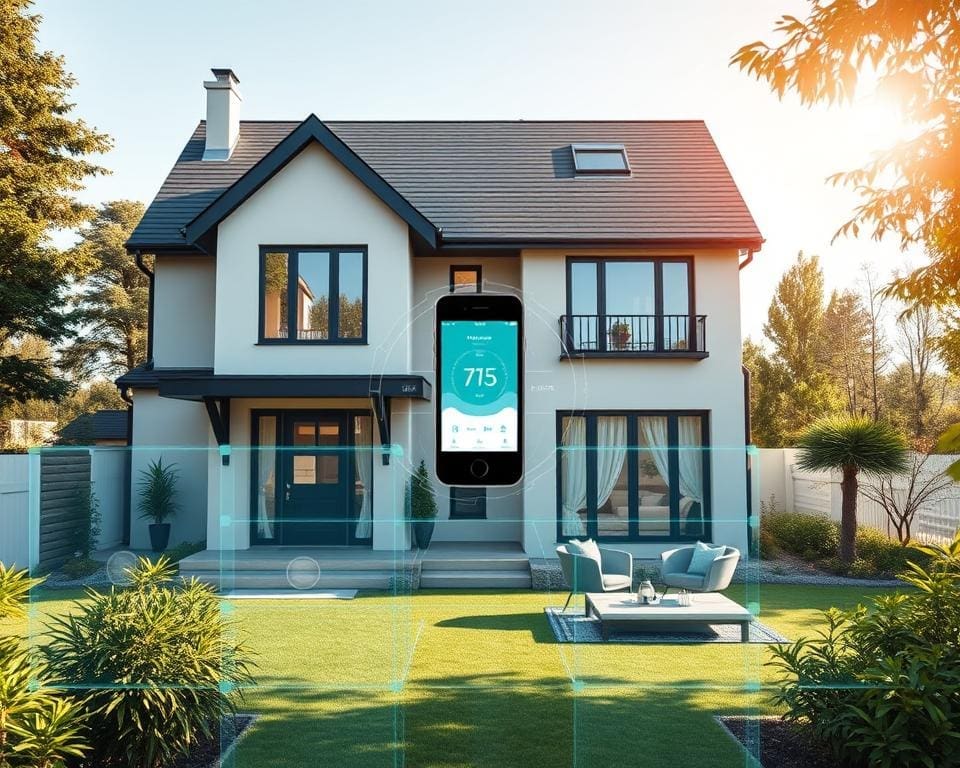Smart thermostats with geo-fencing capabilities are reshaping the landscape of energy-efficient home technology. By harnessing GPS data, these intelligent heating systems can automatically adjust heating or cooling settings based on the homeowner’s proximity to the property. This innovative approach not only optimises energy usage but also ensures that your home remains comfortable at all times, ultimately leading to reduced utility bills.
Leading brands, such as Nest, Ecobee, and Honeywell, have embraced this technology, creating devices that exemplify the future of smart temperature regulation. With their exciting features and seamless integration into smart homes, these devices provide a level of convenience that is truly inspiring.
Understanding Geo-Fencing Technology
Geo-fencing is revolutionising the way we interact with our living spaces, particularly through the integration of innovative technology in smart home systems. By establishing a virtual boundary around a physical location, this technology utilises GPS or RFID to automate actions based on a user’s location. In the realm of smart thermostats, geo-fencing creates a seamless connection between a homeowner’s movements and their home environment, enhancing daily life significantly.
What is Geo-Fencing?
At its core, geo-fencing employs the principle of creating a defined perimeter in a digital landscape. When an individual crosses this boundary, predetermined actions can be triggered automatically. This technological advancement not only simplifies daily tasks but also paves the way for features that promote convenience and efficiency. In combination with smart home devices, geo-fencing elevates home automation to a new standard, allowing for real-time adjustments based on actual presence.
How Geo-Fencing Enhances Smart Thermostat Functionality
The incorporation of geo-fencing into smart thermostat systems facilitates geolocation-based thermostat control, greatly enhancing user experience. As the thermostat tracks the homeowner’s location through their smartphone, it intelligently adjusts heating or cooling settings according to their movements. This capability leads to enhanced home comfort, as the internal temperature can be optimised prior to their arrival. The use of energy-saving thermostat features ensures that energy is conserved when the home is vacant, eliminating unnecessary usage.
Furthermore, this innovative approach fosters smart home climate control by ensuring consistent and comfortable temperatures throughout the day. Users can expect a significant reduction in energy bills while enjoying the convenience that comes with automatic adjustments tailored to their specific routines.

Smart Thermostats with Geo-Fencing Capabilities
Smart thermostats with geo-fencing capabilities represent a significant advancement in energy-efficient home technology. These devices are equipped with numerous features that make them user-friendly and highly effective in managing home heating and cooling systems.
Key Features of Smart Thermostats
Many models incorporate cutting-edge technology that enhances their functionality. Notable features include:
- Learning algorithms that adapt to the user’s schedule, optimising temperature settings accurately.
- Remote access through smartphone applications, allowing control from virtually anywhere.
- Compatibility with various smart home devices, providing an integrated experience.
- Intuitive interfaces that make interaction simple for all users.
Popular variants such as the Nest Learning Thermostat and Ecobee SmartThermostat leverage these features, providing real-time energy usage tracking and voice activation via assistants like Amazon Alexa and Google Assistant. This ensures effortless management of home climate settings.
Benefits for Energy Efficiency
The integration of geo-fencing technology within these smart heating solutions brings several advantages. One primary benefit is the significant reduction of energy waste. By adjusting heating or cooling in empty rooms, these systems operate efficiently, based on actual occupancy patterns.
With energy-saving thermostat features, households can observe a considerable drop in their energy expenditure. Users can programme their thermostats to optimise usage according to their daily routines. This blend of practicality and intelligence contributes to a more sustainable living environment, making energy-efficient home technology essential for modern households.
Improving Home Comfort with Smart Heating Solutions
Smart heating solutions have transformed the way we experience enhanced home comfort. These intelligent heating systems adjust temperatures based on user movement, creating a personalised indoor environment. By utilising occupancy sensors alongside geo-fencing technology, these systems can detect when residents are present or absent, allowing for effective smart temperature regulation.
Adjusting Temperatures Based on User Movement
The ability of smart heating solutions to adapt to user habits leads to unprecedented levels of comfort. When occupants leave the house, the system can automatically lower the temperature, conserving energy without sacrificing comfort upon their return. This seamless adjustment not only enhances convenience but also supports energy-efficient home technology, reducing both energy bills and environmental impact.
Integrating with Other Smart Home Devices
Integration with other smart home devices significantly boosts the functionality of intelligent heating systems. Many smart thermostats work alongside devices such as smart lighting and security systems, facilitating a holistic approach to smart home climate control. This connectivity allows users to establish routines that optimise energy use, making it easier to manage various aspects of home comfort and safety.
For those seeking more information on energy-saving heating options, resources like energy-saving heating systems can provide valuable insights into creating a sustainable home environment. The future of enhanced home comfort lies in adopting such innovative solutions.
Choosing the Right Intelligent Heating Systems
When selecting intelligent heating systems, understanding the top brands and models available can significantly enhance your decision-making process. Several trusted names stand out in the market for their exceptional features and energy-efficient home technology.
Top Brands and Models to Consider
Noteworthy options in the realm of smart thermostats with geo-fencing capabilities include:
- Nest Learning Thermostat – Known for its sleek design and adaptive learning features.
- Ecobee SmartThermostat – Offers room sensor functionality for optimal temperature regulation.
- Honeywell Home T9 – Excellent compatibility with various HVAC systems and impressive energy-saving thermostat features.
These models provide robust geo-fencing functionalities, allowing users to optimise comfort levels while enhancing energy efficiency. Exploring these intelligent heating systems presents an opportunity to refine how you manage your home’s climate.
What to Look for in Your Smart Thermostat
Choosing the right smart thermostat involves several critical factors:
- Compatibility with existing HVAC systems, ensuring seamless integration.
- User-friendly interfaces that simplify temperature adjustments.
- Integration capabilities with other smart home devices for enhanced automation.
- Availability of energy-saving thermostat features that can be easily configured.
- Options for remote access management when away from home.
User reviews serve as valuable resources, providing insight into the effectiveness and reliability of different models. Ensuring that the selected device aligns with personal preferences and lifestyle enhances the overall experience of smart heating solutions.
For those interested in how energy-efficient technologies can extend beyond interiors, exploring alternatives like infrared heaters suitable for outdoor spaces offers an inspiring glimpse into a range of energy-efficient home technology.
The Future of Smart Home Climate Control
The future of smart home climate control is set to become increasingly sophisticated, driven by advancements in technology such as AI-driven algorithms and enhanced machine learning capabilities. These innovations will not only improve the efficiency of smart thermostats with geo-fencing capabilities but also provide a more responsive user experience. Homeowners can look forward to a significant transformation in how their heating and cooling systems adapt to their lifestyles.
As the integration of smart home climate control systems becomes more widespread, consumers will enjoy greater connectivity amongst devices. This will foster intuitive interactions, allowing homeowners to seamlessly manage their home environment. Moreover, the development of energy-efficient home technology will further emphasise a commitment to sustainability, ensuring that comfort and eco-friendliness coexist harmoniously.
Additional trends in design, such as those highlighted in recent articles, underscore an increasing focus on creating personalised living spaces that reflect individual tastes while remaining environmentally conscious. The continuous evolution in smart thermostats, alongside innovative interior design elements, promises a bright future for anyone seeking to optimise their home for both comfort and energy efficiency.
Learn more about how designtrends can impact your living space









